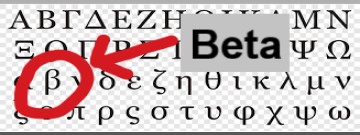
In finance, the beta, or beta coefficient, stylized as β, of an investment is a measure of the risk arising from exposure to general market movements as opposed to idiosyncratic (stock specific) factors. Beta is a measure of a stock’s volatility in relation to the market. This measure can be used in conjunction with Alpha, which is a measure of outperformance relative to a base scenario.
By definition, the market portfolio of all investable assets has a beta of exactly 1 (i.e. with itself). Individual stocks are ranked according to how much they deviate from the market. A beta that is greater than 1.0 indicates that the security’s price is theoretically more volatile than the market. For example, if a stock’s beta is 1.2, it is assumed to be 20% more volatile than the market.
Technology stocks and small caps tend to have higher betas than the market benchmark. A beta of less than 1 means it tends to be less volatile than the market. A high beta may also be indicative of an increased speculative interest to the company’s shares on the part of short-term investors who tend to buy shares in a rising market and sell in a falling market. This may also be applicable in a takeover situation of the rumor period before an official announcement is made.
Using Beta
High β
A company with a β that’s greater than 1 is more volatile than the market. For example, a high-risk technology company with a β of 1.75 would have returned 175% of what the market returned in a given period (typically measured weekly).
Low β
A company with a β that’s lower than 1 is less volatile than the whole market. As an example, consider an electric utility company with a β of 0.45, which would have returned only 45% of what the market returned in a given period.
Negative β
A company with a negative β is negatively correlated to the returns of the market. For example, a gold company with a β of -0.2, which would have returned -2% when the market was up 10%.
Beta Calculation Example
To calculate the beta of a security, traders can use the covariance between the return of the security and the return of the market as well as the variance of the market returns. The formula for calculating beta is the covariance of the return of an asset with the return of the benchmark divided by the variance of the return of the benchmark over a certain period.
Beta = CoVar / Var(qqq)
Covariance measures a stock’s return relative to that of the market. A positive covariance means the stocks tend to move together when their prices go up or down. A negative covariance means the stocks move opposite of each other. Variance measures how the market moves relative to its mean. Variance is used in measuring the volatility of an individual stock’s price over time.Merger Arbitrage Limited has produced a simple excel based calculator to demonstrate how these calculations are made in real life. The user can see how the beta for Fitbit (FIT) is calculated relative to the QQQ ETF up until the rumors of the Google bid surfaced.
